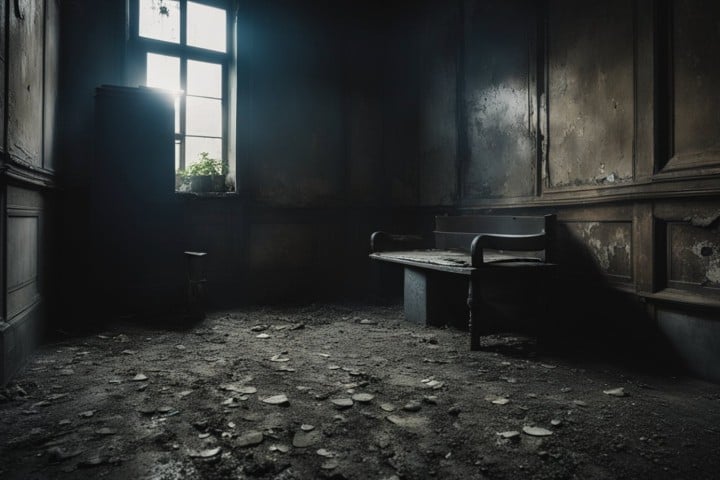Dry rot is a pervasive issue for homeowners, often going unnoticed until substantial damage has occurred. This fungal timber decay arises in timber with high moisture content, typically above 20%. The fungus thrives in poorly ventilated areas, making hidden spots within a new home particularly susceptible.
When moving into a new house, it is crucial to inspect for signs of dry rot to prevent future structural issues. Telltale signals include wood that appears crumbly or has a cuboid fracture pattern, a musty smell, or the presence of fungal spores, which manifest as a white or silvery-gray cotton wool-like growth. By identifying and mitigating these risk factors, new occupants can safeguard their home against the insidious threat of dry rot and ensure the longevity of their investment.
Understanding Dry Rot

Dry rot is a destructive timber decay caused by fungal growth, often resulting in costly repairs such as those addressed by Seattle dry rot repair professionals.
Causes of Dry Rot
The fungus that causes dry rot thrives in environments with a moisture content of 20-30%. It originates from microscopic airborne spores that, upon landing on wood, will germinate under the right conditions of moisture and temperature. Common causes include:
- Plumbing leaks: Persistent moisture from leaks in pipes or fixtures can lead to suitable conditions for dry rot development.
- Poor ventilation: Lack of airflow in crawl spaces and attics can increase humidity and condensation around timber, contributing to fungal growth.
- Defective gutters and downspouts: When these are not properly diverting water away from the home, they can lead to water intrusion and dampness.
Signs and Symptoms
Dry rot can be identified by a variety of symptoms, each indicating the progressive stages of decay:
- Visual changes in wood: Look for wood that appears darker or has cracks that have a ‘cuboidal’ shape.
- Soft or spongy texture: Affected wood may feel soft to the touch, indicating it has been weakened by the fungus.
- Fruiting bodies: The fungus can produce large, mushroom-like fruiting bodies which release spores, perpetuating the cycle.
- Musty smell: A damp, musty odor is commonly associated with areas affected by dry rot.
- Mycelium growth: Silky, white sheets of mycelium may be present on the surface of infected wood, resembling cotton wool.
Detecting dry rot early is crucial to mitigate extensive damage and reduce the need for significant repairs. Regular inspections, especially in prone areas of a new house, can help in early identification and management.
Assessing Dry Rot Damage in Your New Home
When moving into a new house, it’s important to inspect for dry rot to prevent costly repairs later. Identifying the severity and location of any dry rot damage is critical for maintaining the structural integrity of the home.
Inspection Tips
Begin by visually inspecting for signs of wood decay. Look for wood that appears darker than the surrounding areas or wood that crumbles easily when prodded. Also inspect for fungal growth, which typically looks like cotton wool and may be accompanied by a musty smell. Use a screwdriver or a similar tool to gently probe suspected areas—wood affected by dry rot will often feel soft and spongy. It’s important to assess the extent of the damage. Minor surface damage may only require removal of the affected wood and treatment of the surrounding areas.
Areas Prone to Dry Rot
Certain areas of a home are more vulnerable to dry rot due to moisture exposure. Check the following locations carefully:
- Underneath Sinks: Plumbing leaks can promote dry rot.
- Around Windows and Doors: Inspect for signs of moisture ingress which can lead to dry rot.
- Attics and Basements: These areas can have poor ventilation, which promotes dampness and dry rot.
- Roofing: Look at the roofing felt for signs of water damage.
- External Timber: This includes areas such as decking and external door frames.
When inspecting, ensure these high-risk areas are given extra attention. If dry rot is discovered, professional evaluation is recommended. Specialists can offer targeted dry rot repair help, including the treatment and prevention of further decay.
Repairing Dry Rot
Repairing dry rot is a crucial process in maintaining the structural integrity of a house. It involves removing the infected wood and restoring the affected area to prevent further damage.
Professional Remediation
When engaging professional dry rot repair services, especially in areas such as Seattle where moisture levels can exacerbate wood decay, homeowners should expect a thorough process. First, professionals will assess the extent of the rot to determine the necessary actions. The steps typically include:
- Inspection: Thorough examination of the property to identify all affected areas.
- Excavation: Removal of all decayed wood and materials surrounding the infection site.
- Treatment: Application of fungicides and wood hardeners to the remaining timbers to eliminate fungal spores.
- Reconstruction: Replacement of removed sections with new, treated lumber to restore structural stability.
Seattle Dry Rot Repair services are aware of the local climate’s impact on buildings and often offer comprehensive solutions, including preventive measures against future dry rot issues.
Prevention and Maintenance
Effective dry rot prevention and maintenance involve a combination of long-term strategies and regular upkeep to reduce the risk of infestation and structural damage.
Long-Term Prevention Strategies
Seeking professional dry rot repair help is advised when implementing long-term prevention strategies to ensure the efficacy of the measures. First, correct moisture control is pivotal; properties should have proper drainage and ventilation systems to keep wood dry. The use of water-repellent treatments on wood can also create a more resistant surface against fungal growth.
Regular Maintenance Tips
Regular inspections and upkeep can prevent the onset of dry rot. Property owners should include these tasks in their maintenance routine:
- Inspect frequently: Check areas prone to moisture regularly for signs of dampness or rot.
- Paint and seal: Keep wood surfaces painted or sealed to protect from moisture penetration.
- Immediate action: Address any visible signs of dry rot immediately to prevent it from spreading.
By embracing these prevention and maintenance strategies, homeowners can effectively safeguard their property against the costly and destructive effects of dry rot.
We hope you found this blog post on The Hidden Threat: Dry Rot And What to Look for When Moving Into A New House, useful. Be sure to check out our post on Property Maintenance: Advice for New Investors for more great tips!
Have Experience in the Moving Industry? Want an Additional Income Stream? Work With All Around Moving!
Partner with us and we’ll help you make money by establishing your own moving relocation consultant business. Click here to learn more.





